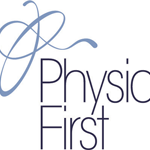The Three Stages of Inflammation
Inflammation is the body’s response to injury. Injury to soft tissues can arise from a number of sources. Physical traumas such as a strain, sprain or contusion are most common, whereas injuries can also occur from bacterial or viral infections, heat, or chemical injury. Trauma causes direct damage to cells in the immediate area of injury, causing bleeding. The bleeding initiates a cascade of events in the inflammatory process that promote healing of the injured tissue. Progression from acute to chronic inflammation can result from persistent injury or individual factors (eg. diabetes, corticosteroid use, blood disorders). How a soft tissue injury is managed is often responsible for the outcome of the injury.
Phase 1: Inflammatory Response
Healing of acute injuries begins with the acute vascular inflammatory response. The purpose of vascular changes is to increase blood flow to the local area, mobilize and transport cells to the area to initiate healing. The damaged cells are removed and the body begins to put new collagen in the area of injury. This phase is initiated immediately after injury and lasts 3-5 days.
Signs and Symptoms:
Pain, warmth, swelling, palpable tenderness, limitation in joint or muscle range of motion
Treatment focus:
Decrease pain and swelling, prevent chronic inflammation, maintain mobility and strength in adjacent areas while injured areas are rested
Phase 2: Repair and Regeneration
The second phase is characterized by new collagen formation. New collagen fibers are laid down in a disorganized manner in the form of a scar and there are weak links between each fiber. Thus, the new tissue is weak and susceptible to disruption by overly aggressive activity. This phase lasts from 2 days to 8 weeks.
Signs and Symptoms:
Less warmth and swelling, palpable tenderness decreases, pain felt with tissue resistance or stretch of the tissue
Treatment focus:
Range of motion exercises, joint mobilization, scar mobilization to produce a mobile scar, light loads to promote tissue remodel
Phase 3: Remodelling and Maturation
As healing progresses, the tissue continues to remodel, strengthen and improve its cellular organization. There is less new collagen formation, but increased organization of the collagen fibers, and stronger bonds between them. Tension becomes important because new collagen must orient along the lines of stress to best accommodate the loads required for function. The end of tissue remodelling is unknown and may take months to years for completion.




